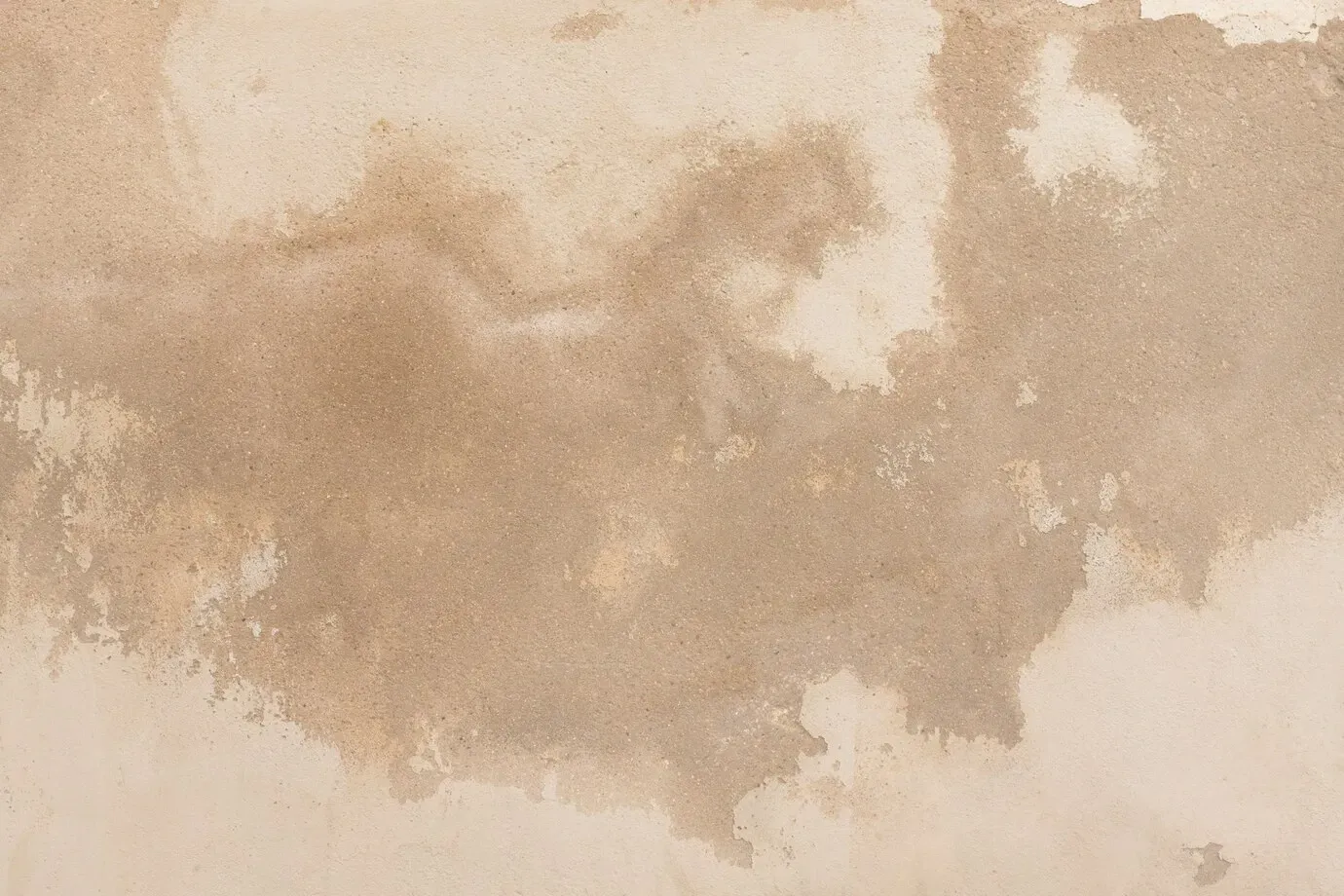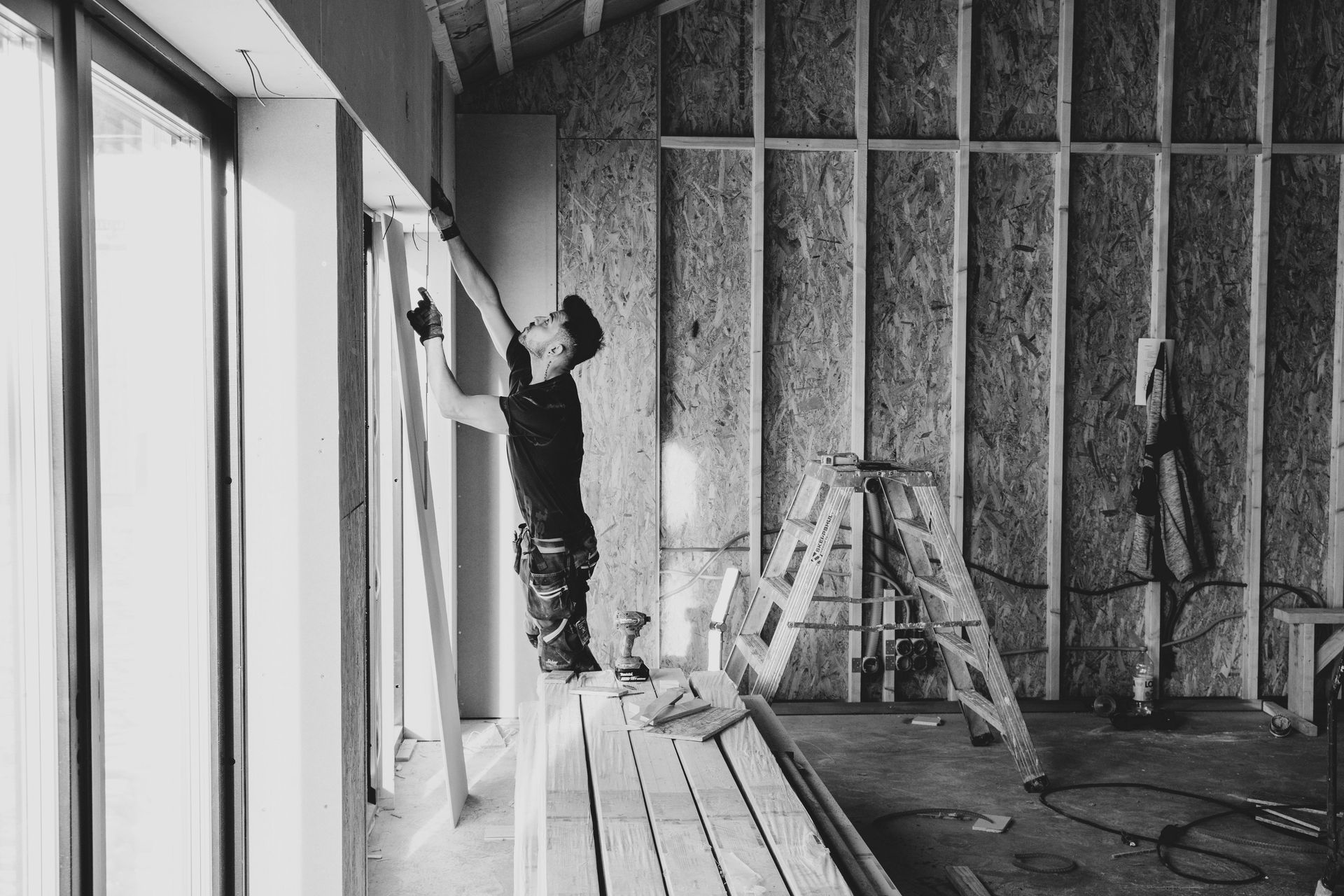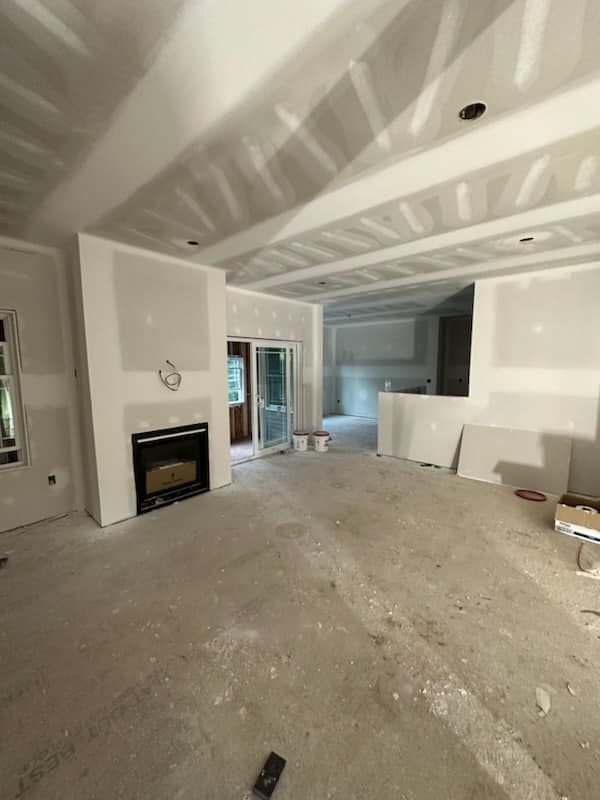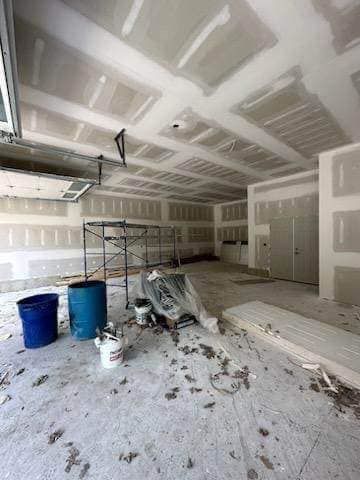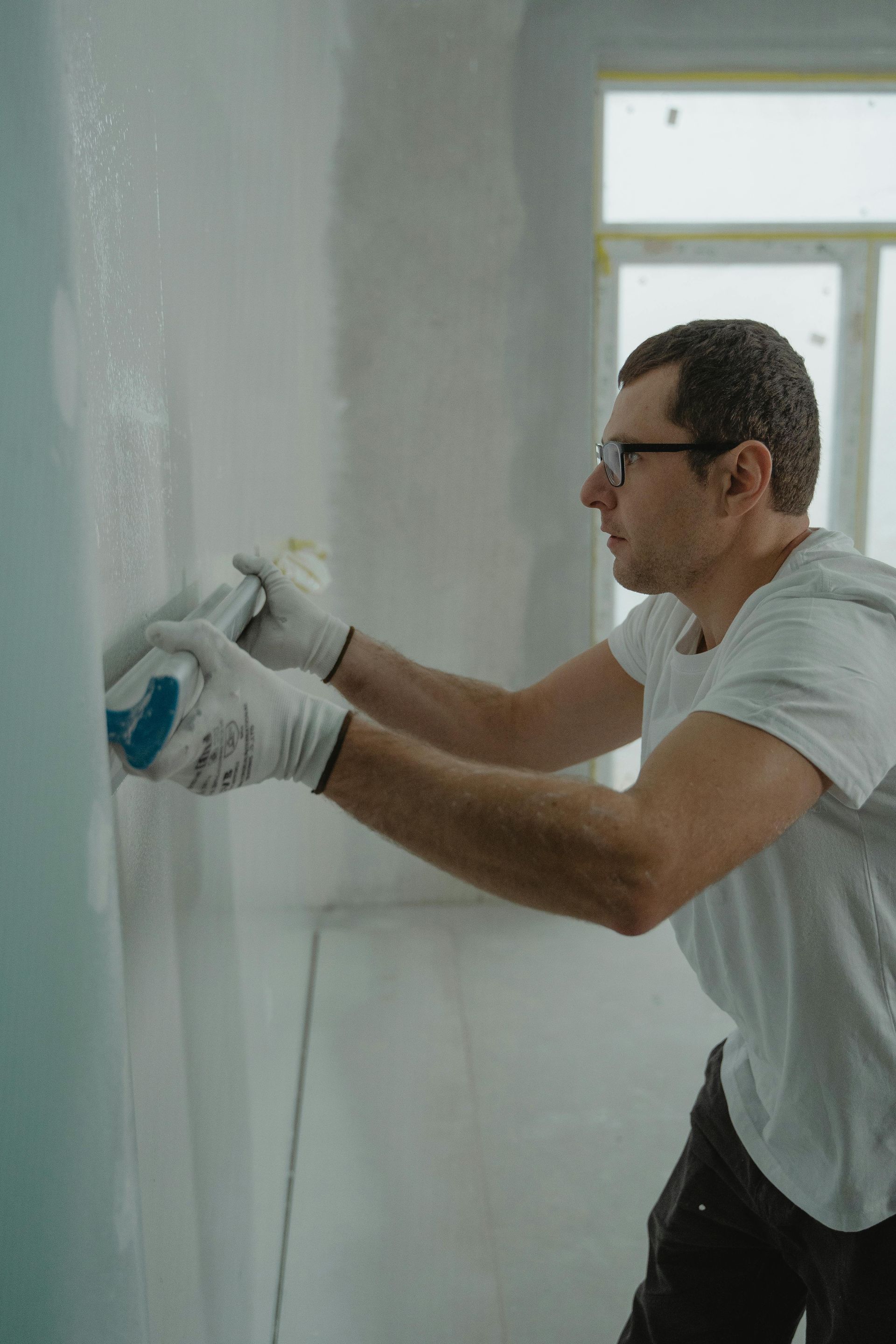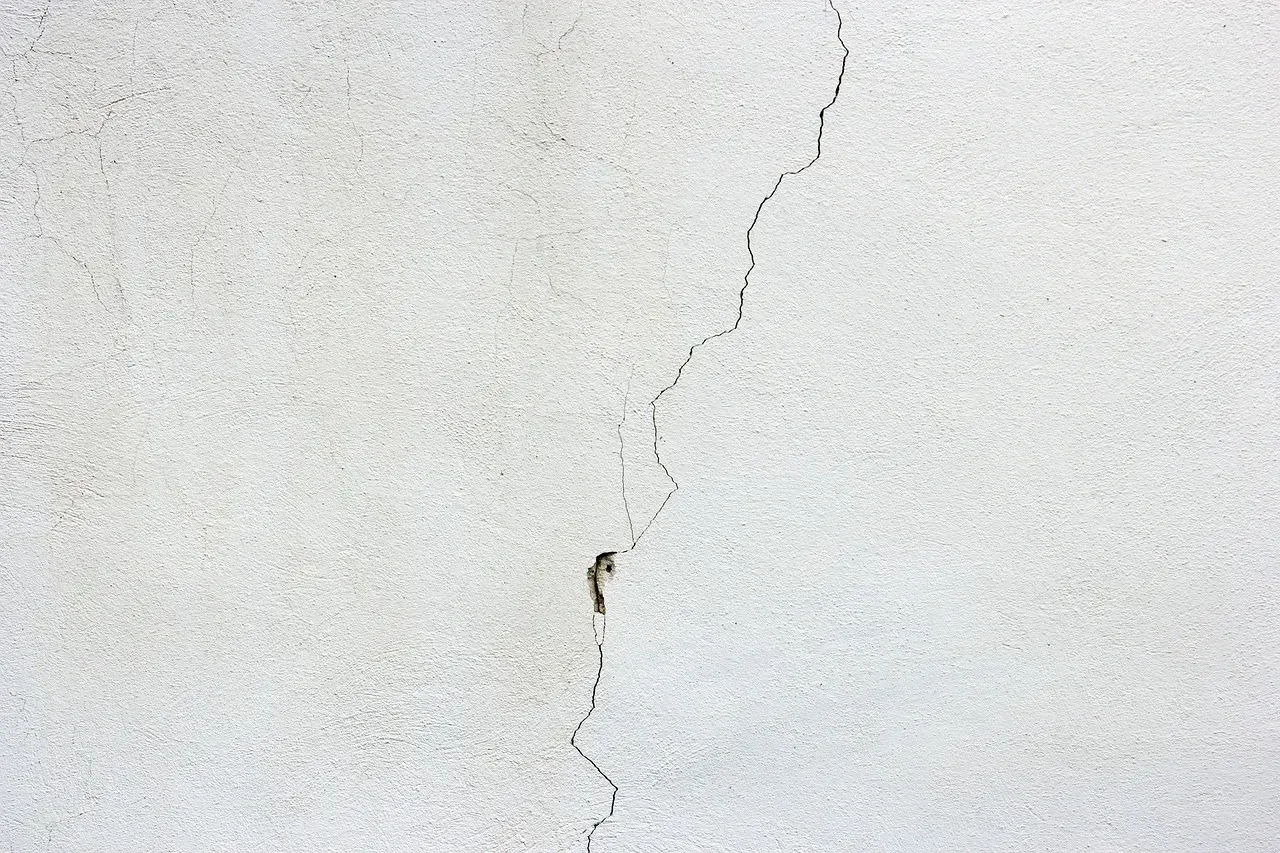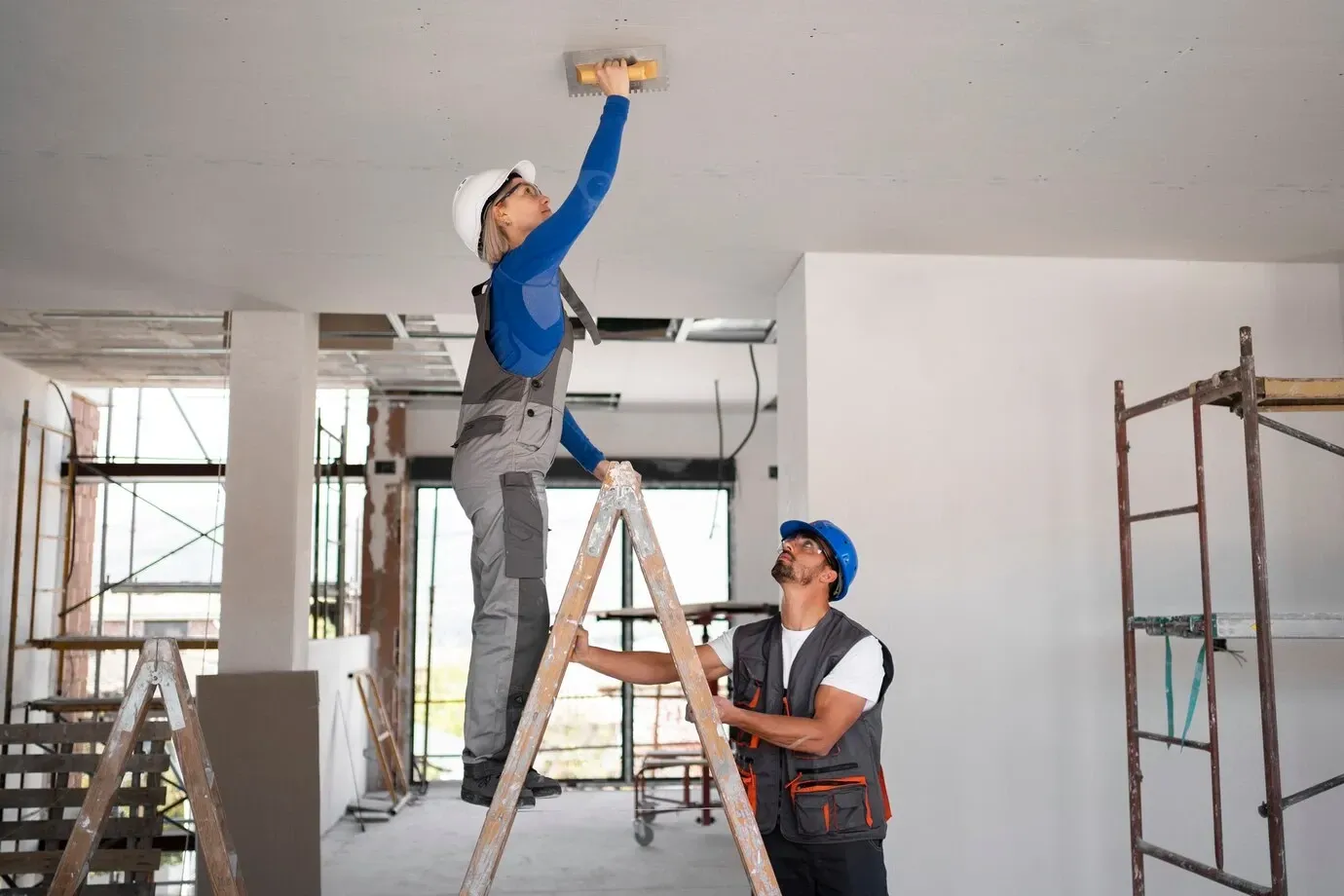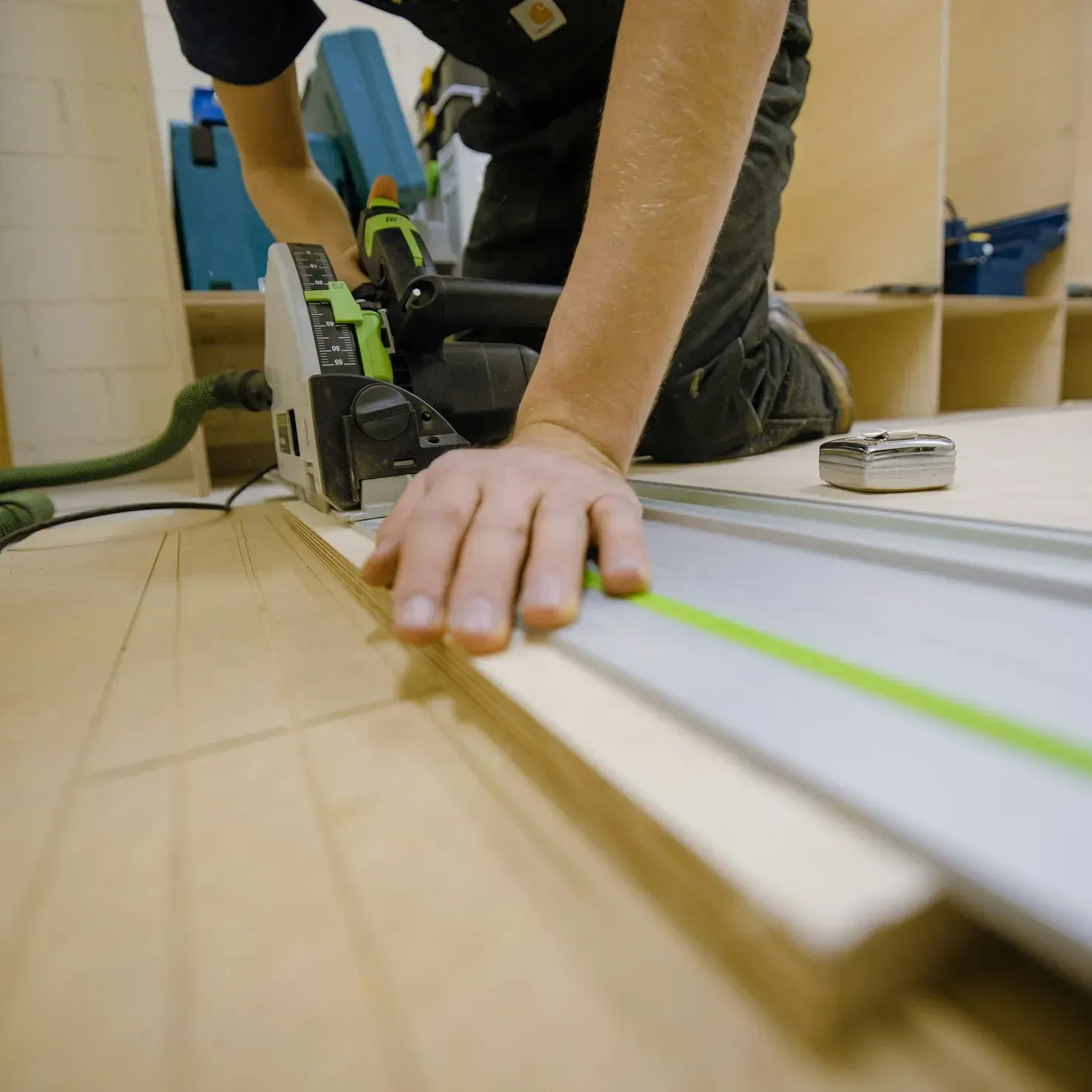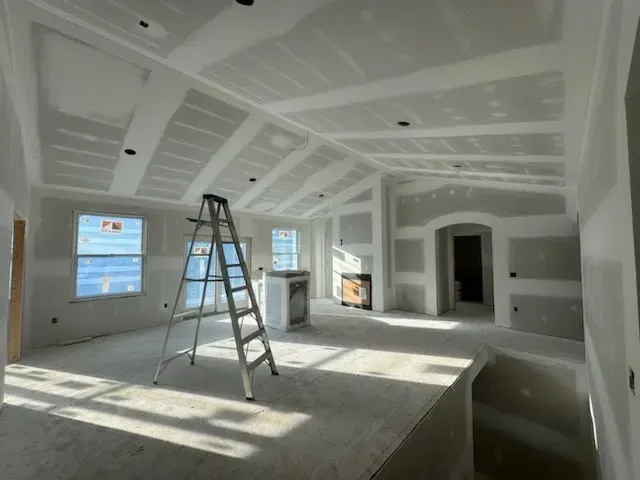
Comprehensive Guide to Drywall Repair Services Near You
Got holes in your walls? Or maybe you’ve noticed some unsightly cracks or water damage? Don’t worry, these common drywall issues are easier to fix than you might think. With the right approach, you can handle small repairs yourself or call in a pro for more significant damage.
In this guide, we’ll walk you through how to tackle various drywall problems, from minor holes to major cracks. We’ll also help you find the best drywall repair services near you. Whether you’re a DIY enthusiast or prefer professional help, we've got you covered.
Common Drywall Issues and Solutions
How to Fix Holes in Drywall
Holes in drywall can happen for many reasons. Moving furniture, accidental bumps, or even doorknobs can cause damage. Small holes, up to 1/2 inch in diameter, can be fixed easily with some spackle and a putty knife. For larger holes, you'll need a drywall patch kit, which includes a piece of drywall, joint compound, and some mesh tape.
Steps:
- Clean the area around the hole.
- Apply the patch over the hole.
- Spread the joint compound over the patch, blending it with the wall.
- Let it dry, then sand it smooth.
- Paint over the repaired area to match the rest of the wall.
How-To: Basic Drywall Installation
Repairing Cracks in Drywall
Cracks often appear in drywall due to settling or moisture changes. To fix a crack, you need some joint compound, mesh tape, and a putty knife.
Steps:
- Clean out the crack and remove any loose debris.
- Apply mesh tape over the crack.
- Spread joint compound over the tape, feathering it out at the edges.
- Let it dry, then sand it smooth.
- Apply a second coat if necessary, then sand and paint.
Sanding, Joint Compound, Priming, Finishing Techniques
Patching Drywall
Patching drywall involves fixing larger holes or damaged sections. For a successful patch, you'll need to cut out the damaged area and replace it with a new piece of drywall.
Steps:
- Cut out the damaged section, making clean, straight cuts.
- Cut a new piece of drywall to fit the hole.
- Secure the new drywall piece with screws or adhesive.
- Apply mesh tape around the edges.
- Spread joint compound over the tape, feathering it out.
- Let it dry, then sand and paint.
Common Drywall Repair Mistakes and How to Avoid Them
DIY vs. Hiring a Professional Installer
While DIY drywall repair can save money, hiring a professional ensures the job is done correctly. Professionals have the tools, skills, and experience to handle any drywall issue. They can also tackle larger projects like drywall installation and major repairs efficiently.
DIY vs. Hiring a Professional Installer
Choosing the Right Drywall Repair Service
Finding the right drywall repair service can make a huge difference in the quality and longevity of the repairs. Here’s how to ensure you choose the best contractor for your needs.
How to Find Reliable Drywall Contractors Near You
Start by asking friends, family, or neighbors for recommendations. Personal experiences can give you a good sense of what to expect. Additionally, check online reviews on sites like Yelp or Google to see what other customers have to say about local contractors.
For more on this, check out our guide on the qualities of a reputable drywall contractor.
Questions to Ask Drywall Contractors
When you’ve shortlisted a few contractors, reach out to them with these key questions:
- Are you licensed and insured?
- How long have you been in business?
- Can you provide references from recent clients?
- What is your estimated timeline for the project?
- What is included in your quote?
Asking these questions will help you gauge their professionalism and reliability. Understanding the benefits of hiring a professional drywall contractor can also provide insights into making the right choice.
Residential vs. Commercial Drywall Contractors
Residential and commercial drywall projects have different requirements. Residential projects often focus on aesthetics and minor repairs, while commercial projects may involve larger spaces and stricter building codes. Make sure the contractor you choose has experience relevant to your specific needs. Preparing your home is crucial too, so here are some tips for preparing your home for drywall installation (coming soon).
Cost Breakdown of Drywall Services
Understanding the cost breakdown can help you budget effectively. Costs typically include materials, labor, and any additional services like painting or insulation. Get detailed quotes from multiple contractors to compare. Dive deeper into the cost breakdown of drywall services to know what to expect.
Step-by-Step Guide to DIY Drywall Repairs
Doing drywall repairs yourself can save money and give you a sense of accomplishment. Here’s a step-by-step guide to help you tackle common drywall issues.
Essential Tools and Materials for Drywall Repair
Before you start, gather the necessary tools and materials:
- Utility knife
- Putty knife
- Sanding sponge
- Drywall saw
- Joint compound
- Drywall tape (mesh or paper)
- Drywall patch kit (for larger holes)
- Screws and drill (for securing large patches)
- Primer and paint (to finish the repair)
Having the right tools will make the process smoother and more efficient.
How to Patch a Hole in Drywall
Small holes in drywall are common and easy to fix. For holes up to 1/2 inch in diameter, you can use some spackle and a putty knife. For larger holes, a drywall patch kit is recommended.
Steps:
- Clean the area around the hole.
- Apply the patch over the hole.
- Spread the joint compound over the patch, blending it with the wall.
- Let it dry, then sand it smooth.
- Paint over the repaired area to match the rest of the wall.
For more detailed instructions, refer to our how-to guide on basic drywall installation.
Repairing Small Holes and Cracks
Small holes and cracks are also easy to handle with the right approach. Here’s how:
- How to Fix Small Holes in Drywall:
- Clean out the hole.
- Fill it with spackle using a putty knife.
- Let it dry, then sand it smooth.
- Apply a second coat if needed, then sand and paint.
- How to Repair Cracks in Drywall:
- Clean out the crack.
- Apply mesh tape over the crack.
- Spread joint compound over the tape, feathering it out at the edges.
- Let it dry, then sand it smooth.
- Apply a second coat if necessary, then sand and paint
For a smoother finish, learn about sanding, joint compound, priming, and finishing techniques.
Ceiling Drywall Repairs
Ceiling drywall repairs can be a bit trickier but are still manageable. Here's a quick guide:
- How to Repair Ceiling Drywall:
- Clean the damaged area.
- Apply a patch if the damage is significant.
- Spread joint compound over the patch.
- Sand it smooth once dry.
- Paint to match the existing ceiling.
- Fixing Ceiling Cracks:
- Clean the crack.
- Use mesh tape and joint compound.
- Sand and paint once dry.
Following these steps can help you fix ceiling issues effectively.
Best Practices for Drywall Maintenance
Regular maintenance can prevent many drywall issues. Here are some tips:
- Keep an eye out for early signs of damage.
- Address small cracks and holes promptly.
- Avoid hanging heavy objects without proper anchors.
- Ensure your home is well-ventilated to prevent moisture buildup.
For more maintenance tips, check out our guide on best practices for drywall maintenance (coming soon).
Hiring the Best Drywall Contractors Near You
Finding the right drywall contractor can make a significant difference in the quality and durability of your repairs or installations. Here’s how to find and choose the best professionals for the job.
Why Hire a Professional Drywall Contractor?
Hiring a professional drywall contractor comes with several benefits:
- Expertise: Professionals have the skills and experience to handle complex repairs and installations.
- Efficiency: They can complete projects faster and more efficiently.
- Quality: Professional contractors use high-quality materials and techniques, ensuring long-lasting results.
Learn more about the benefits of hiring a professional drywall contractor.
How to Choose the Best Drywall Contractors Near Me
When searching for drywall contractors, follow these steps:
- Ask for Recommendations: Start by asking friends, family, and neighbors for referrals. Personal recommendations are often reliable.
- Check Online Reviews: Look up contractors on review sites like Yelp, Google, and Angie’s List. Pay attention to both positive and negative reviews.
- Verify Credentials: Ensure the contractor is licensed and insured. This protects you in case of any accidents or damages.
- Get Multiple Quotes: Contact several contractors and request detailed quotes. Compare their pricing, timelines, and included services.
- Ask the Right Questions: Here are some key questions to ask:
- Are you licensed and insured?
- How long have you been in business?
- Can you provide references from recent clients?
- What is your estimated timeline for the project?
- What is included in your quote?
For more detailed guidance, see our article on qualities of a reputable drywall contractor.
Comparing Residential and Commercial Drywall Contractors
Residential and commercial drywall projects have different requirements. Here’s a quick comparison to help you decide:
- Residential Projects: Focus on aesthetics, minor repairs, and home improvements. Typically involve smaller spaces and less stringent building codes.
- Commercial Projects: Involve larger spaces, stricter codes, and often require specialized skills and equipment. Suitable for offices, retail spaces, and large buildings.
Understanding these differences can help you choose the right contractor for your specific needs. For more insights, explore our guide on drywall vs. plaster.
Tips for Preparing Your Home for Drywall Installation
Proper preparation can ensure a smooth drywall installation process. Here are some tips:
- Clear the Area: Move furniture and personal items away from the work area.
- Cover Floors and Furniture: Use drop cloths or plastic sheeting to protect your belongings.
- Ensure Easy Access: Make sure the contractors have easy access to the work area and any necessary utilities.
- Communicate Clearly: Discuss your expectations and any specific requirements with the contractor beforehand.
For a more detailed preparation guide, check out tips for preparing your home for drywall installation.
Cost Breakdown of Drywall Services
Understanding the cost breakdown of drywall services can help you budget effectively. Here’s what to expect:
- Materials: Includes drywall sheets, joint compound, tape, screws, and other necessary supplies.
- Labor: Covers the cost of the contractor’s time and expertise.
- Additional Services: May include painting, insulation, or debris removal.
Getting detailed quotes from multiple contractors can help you compare and choose the best option for your budget. Dive deeper into the cost breakdown of drywall services to know what to expect.
Advanced Drywall Techniques and Services
Delving into advanced drywall techniques and services can enhance the quality and efficiency of your home improvement projects. Here’s a comprehensive look at what you need to know.
Drywall Installation Tips
Proper installation is key to durable and smooth drywall. Here are some essential tips:
- Measure and Cut Accurately: Ensure you measure the wall space precisely and cut the drywall sheets accordingly. Use a utility knife and a straight edge for clean cuts.
- Secure the Drywall: Use screws or nails to secure the drywall sheets to the studs. Make sure the screws are countersunk but not breaking the paper surface.
- Apply Joint Tape and Compound: Use mesh or paper tape on the seams and apply joint compound over it. Feather out the edges for a smooth finish.
- Sand and Prime: Once the compound is dry, sand the area to create a smooth surface. Apply a primer before painting.
For a step-by-step guide, refer to our article on how to install drywall.
Choosing the Right Type of Drywall
Different projects may require different types of drywall. Here’s a quick overview:
- Standard Drywall: Ideal for most residential spaces.
- Moisture-Resistant Drywall: Best for bathrooms and kitchens.
- Fire-Resistant Drywall: Suitable for garages and utility rooms.
- Soundproof Drywall: Great for home offices and entertainment rooms.
Selecting the right type can ensure durability and performance. Explore our detailed guide on choosing the right type of drywall.
How Much is the Labor for Drywall Installation in Easthampton
Labor costs for drywall installation can vary based on the scope of the project and local rates. In Easthampton, the average cost ranges from $1.50 to $3.50 per square foot. This includes preparation, installation, and finishing.
Factors affecting the cost:
- Size of the project
- Complexity of the installation
- Additional services like insulation or painting
For a more accurate estimate, contact local contractors for detailed quotes. Learn more in our article on labor costs for drywall installation in Easthampton.
Insulation and Drywall: What You Need to Know
Combining insulation with drywall installation can improve energy efficiency and comfort in your home. Here’s why it’s beneficial:
- Energy Savings: Proper insulation reduces heating and cooling costs.
- Soundproofing: Insulation can help dampen noise between rooms.
- Moisture Control: Insulation can prevent moisture buildup and reduce mold risk.
Finding contractors who offer both services can streamline the process. For more details, check out our guide on insulation and drywall services (coming soon).
Framing and Drywall: A Complete Guide
Proper framing is crucial for a successful drywall installation. Here’s what you need to know:
- Importance of Wall Framing: Provides structural support and ensures walls are straight and secure.
- Materials: Commonly use wood or steel studs.
- Techniques: Accurate measurements and cuts are essential. Use a level to ensure studs are vertical and evenly spaced.
Working with contractors experienced in both framing and drywall can ensure high-quality results. Read more about framing and drywall techniques.
Painting Drywall: A Finishing Touch
After drywall installation, painting is the final step to achieve a polished look. Here are some tips:
- Prime the Surface: Apply a primer to seal the drywall and ensure even paint coverage.
- Choose Quality Paint: Use high-quality paint for durability and a professional finish.
- Apply Even Coats: Use a roller for large areas and a brush for edges and corners. Apply at least two coats for best results.
For detailed instructions, see our guide on painting drywall (coming soon).
Environmental Benefits of Using Eco-Friendly Drywall Materials
Choosing eco-friendly drywall materials can contribute to a healthier environment and home. Benefits include:
- Reduced Emissions: Eco-friendly materials often have lower VOCs, improving indoor air quality.
- Sustainability: Made from recycled or renewable resources, reducing environmental impact.
- Energy Efficiency: Some eco-friendly options offer better insulation properties.
For more on this topic, check out our article on the environmental benefits of using eco-friendly drywall materials (coming soon).
Conclusion
Fixing drywall might seem tough, but with the right steps, it’s doable. We started by identifying common drywall issues like holes and cracks and how to handle them. Knowing these basics can save you time and hassle.
Next, we looked at choosing the right drywall repair service. It's vital to find reliable contractors by checking reviews, asking the right questions, and comparing quotes. This ensures you get quality work that lasts.
For those who prefer doing it themselves, our step-by-step guide on DIY drywall repairs is handy. With the right tools and a bit of patience, you can achieve professional-looking results.
Finally, we explored advanced drywall techniques and services. From selecting the right type of drywall to combining it with insulation, these tips can enhance your home’s comfort and value. Proper framing and finishing techniques also make a big difference.
Call to Action
When it comes to drywall, whether you’re repairing, installing, or finishing, you want the best. That's where Frenchie Drywall comes in. Serving Easthampton, Springfield, Chicopee, and the surrounding areas, Frenchie Drywall is your premier drywall contractor. With years of experience, they offer top-quality residential and commercial drywall services, including installation and interior painting.
Don’t settle for less. Choose Frenchie Drywall for your next project. Contact us today and see the difference that expertise and quality make.

